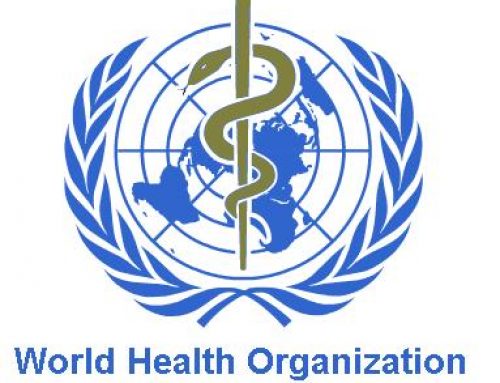Coronavirus Pandemic
Short epidemiological overview of the current situation on COVID-19 pandemic in Southeast European (SEE) countries
Edmond Puca1, Rok Čivljak2,3, Jurica Arapović4, Corneliu Popescu5,6, Iva Christova7, Lul Raka8,9, Fadil Cana10, Vesna Miranović11, Drosos Karageorgopoulos12, Denis Baš13, Bianca Paglietti14, Aleksandra Barać15,16
1 Service of Infectious Diseases, University Hospital Center, Tirana, Albania 2 Department of Respiratory Tract Infections, Dr. Fran Mihaljević University Hospital for Infectious Diseases, Zagreb, Croatia 3 University of Zagreb School of Medicine, Zagreb, Croatia 4 Department of Medical Biology, School of Medicine, University Clinical Hospital Mostar, Mostar, Bosnia and Herzegovina 5 Carol Davila University of Medicine and Pharmacy, Bucharest, Romania 6 Dr Victor Babes Clinical Hospital of Infectious and Tropical Diseases, Bucharest, Romania 7 National Center of Infectious and Parasitic Diseases, Sofia, Bulgaria 8 National Institute of Public Health of Kosova, Prishtina, Kosova 9 University of Prishtina “Hasan Prishtina”, Prishtina, Kosova 10 University Clinic for Infectious Diseases and Febrile Conditions, Clinical Campus “Mother Teresa”, Skopje, North Macedonia 11 Ministry of Health, Podgorica, Montenegro 12 Department of Medicine, Attikon General Hospital, Athens, Greece 13 Pediatric outpatient Department, Juventina Clinic, Ljubljana, Slovenia 14 Department of Biomedical Sciences, University of Sassari, Sassari, Italy 15 Clinic for Infectious and Tropical Diseases, Clinical Centre of Serbia, Belgrade, Serbia 16 Faculty of Medicine, University of Belgrade, Belgrade, Serbia
Abstract We are living in times where a viral disease has brought normal life in much of the world to a halt. The novel coronavirus known as severe acute respiratory syndrome coronavirus 2 (SARS-CoV-2) causing coronavirus disease 2019 (COVID-19) started in December 2019 in Wuhan, China initially and in a short time crossed the European borders. After mitigating the epidemic in China, Italy became one of the most COVID- 19 affected countries worldwide. International travelers are important sources of infectious diseases and a possible source of epidemic. Due to its political, geographic, and cultural similarities, Italy is one of the main economic partners of Southeast European (SEE) countries. Our data show that infection in index cases in all 11 SEE countries was travel-related with Italy being a source country for 8/11 countries. After the first case identifications on February 25, the number of cases in SEE countries is continually rising reaching the total number of 15,612 with 565 fatal cases and overall case fatality ratio (CFR) of 3.6 (median 3.8, range 0.8–5.5) by April 10, 2020. At a time when the COVID-19 pandemic is approaching its peak, apart from the problems with treatment of the disease and care for critically ill patients, there are other equally important problems, such as organization of outbreak response, provision of health care, lack of hospital personnel, disruption of personal protective equipment supply chains and health care workers (HCWs) protection. But what is more important is the heroic behavior of the HCWs who are showing their humanity by disregarding their lives.
Key words: COVID-19; pandemic, SARS-CoV-2; Southeast European (SEE) countries; healthcare workers.
J Infect Dev Ctries 2020; 14(5):433-437. doi:10.3855/jidc.12814
(Received 14 April 2020 – Accepted 21 May 2020)
Copyright © 2020 Puca et al. This is an open-access article distributed under the Creative Commons Attribution License, which permits unrestricted use, distribution, and reproduction in any medium, provided the original work is properly cited.
The new decade of the century started with the emergence of a novel coronavirus known as severe acute respiratory syndrome coronavirus 2 (SARS-CoV- 2) causing coronavirus disease 2019 (COVID-19) [1– 3]. The SARS-CoV-2 outbreak began in December
2019 in Wuhan, China and in a short time spread outside Chinese borders, disseminating throughout the continents [4]. After reaching more than 118,000 cases with over 4,000 deaths in 114 countries, on March 11, the World Health Organization (WHO) assessed that
Puca et al. – COVID-19 pandemic in SEE countries J Infect Dev Ctries 2020; 14(5):433-437.
COVID-19 can be characterized as a pandemic [5,6]. After outbreaks of the severe acute respiratory syndrome (SARS) in 2002/2003 and the Middle East respiratory syndrome (MERS) in 2012, COVID-19 is the third coronavirus epidemic in the third millennium underscoring the need for the ongoing surveillance of infectious disease trends throughout the world [2,6,7]. In most of the cases, the COVID-19 presents with mild to moderate respiratory illness without requiring special treatment. However, the elderly and people with comorbidities as hypertension, diabetes, cardiovascular and respiratory system diseases, and other underlying disease are more likely to develop serious illness requiring intensive care treatment associated with poorer clinical outcomes [8–10]. Even without strong evidences from randomized controlled trials confirming effective antiviral treatment against COVID-19, recent studies have revealed many attractive therapeutic options, such as antiviral agents remdesivir, favipiravir, lopinavir/ritonavir, chloroquine, arbidol, and ribavirin. Several other treatment options, e.g., antiparasitic drugs (hydroxychloroquine), investigational antivirals (camostat mesylate), immunotherapeutic (tocilizumab), and convalescent plasma are under investigation in clinical trials or are being considered for clinical use [1,6,11–14].
On the other hand, international travelers are important sources of infectious diseases and a possible source of epidemic [15–17]. Most of the internationally exported cases at the beginning of the pandemic originated from China. Two weeks after the first report of the COVID-19 cases in China, travel-related cases have been reported from Thailand, Japan, and South Korea followed by other neighbouring Southeast Asian countries, all related to travels from China [4,15,17,18]. However, among Southeast European (SEE) countries there were no imported cases from China.
After mitigating the epidemic in China, on February Italy became one of the most COVID-19 affected countries worldwide, where the number of cases are still dramatically raising [19,20]. Hence, the infection spreads by immigration, traveling, or seasonal employment in endemic areas [17]. In these conditions, when a large number of people travels each year to developing countries as tourism destinations, an obvious part of the confirmed COVID-19 cases originate from these areas [16]. Due to its political, geographic, and cultural similarities, Italy is one of the main economic partners in terms of foreign trade and investments, of SEE countries, especially Slovenia, Croatia, Montenegro and Albania. In addition, bilateral and multilateral agreements have increased cooperation
434 in the fields of science, education, labor and tourism. All this has led to an increased transfer of people and goods, especially tourists and migrant workers, between Italy and the neighboring SEE countries (The Italian Ministry of Foreign Affairs and International Cooperation. Italy – Balkans Bilateral Relations. https://www.esteri.it/mae/en/politica_estera/aree_geog rafiche/europa/balcani). Thousands of citizens from SEE countries are residents, immigrants or seasonal workers in Italy and many of them fly or drive back and forth regularly for work and personal travel. Since Italy is one of the most important trade and travel connection with Southeast Europe, the aim of this paper was to determine the effect of the migration between Italy and SEE countries on the spread of the epidemic to these countries.
Imported cases of COVID-19 have arrived in SEE countries quickly after the beginning of the outbreak in the regions of Lombardy and Veneto in northern Italy. As shown in Table 1, the first case in SEE countries was identified in Croatia on February 25, followed by Greece, North Macedonia, Romania, Slovenia, Bosnia and Herzegovina, Serbia, Bulgaria, Albania, Kosovo, and Montenegro. Moreover, in some countries such as Croatia, Slovenia, Bosnia and Herzegovina, Albania and North Macedonia, a few clusters of COVID-19 imported from Italy were registered that makes epidemiological monitoring much more difficult. Since the first identification on February 25, the number of cases has been rising constantly reaching the total number of 15,612 with 565 fatal cases and overall case fatality ratio (CFR) of 3.6 (median 3.8, range 0.8–5.5). Based on the case definition [21] and incubation of up to 14 days, travel history and contact tracing, infection in index cases in all 11 SEE countries was travel-related with Italy being as a source country for 8/11 countries (Table 1) [22].
The world has faced a lot of epidemics since ancient times. The epidemic usually occurs when the health care system is not well prepared. During an unexpected epidemic, health authorities are well engaged in outbreak response and damage control only if recognising and understanding the possible threat. Nothwithstanding recent outbreaks show how difficult this could it be, even with good health care systems. However, initially delay in recognising and the lack of knowledge on transmission, prevention, and treatment of the infectious disease may contribute to widespread of the epidemic/outbreak [23]. Europe and SEE countries faced these shortcomings, too. But the question is: Are healthcare systems in the SEE countries sufficiently prepared to face such a huge epidemic? A
Puca et al. – COVID-19 pandemic in SEE countries J Infect Dev Ctries 2020; 14(5):433-437.
large heterogeneity exists in the demographic, social, economic, and political dimensions in SEE countries [24]. Some of the countries are part of European community and some other are trying to be a part of it. Even more, the medical systems in these countries have been hit hardly by the massive emigration of doctors and nurses over the past few years. Migration of medical staff has become a global phenomenon with significant implications for the healthcare delivery systems worldwide [25]. The massive growth in the migration of medical doctors, nurses and other healthcare workers (HCWs) from SEE countries, mainly to European Union, seems to be one of the major obstacles in COVID-19 pandemic preparedness in developing countries. This phenomenon has a significant impact on the quality of healthcare systems in the source countries generally. The healthcare systems in this region are fragile. From the government, all medical staff, including retired, private doctors or hospitals, medical graduate students are required to volunteer in this situation. Looking at this point, we hope to have a limited number of serious cases in order not to overload the health system [26,27]. The burden that will press on the region would be an additional challenge to the healthcare systems and economies. Multiple social and economic issues are ongoing and will impact the situation, including the massive refugees’ migration from Syria to Turkey and Greece [28,29]. Nevertheless, the SEE countries have considerably fewer coronavirus cases compared with the other parts of Europe. They are trying to step up their preparedness to cope with COVID-19 outbreak. The countries in this region, and especially Albania,
435 have taken a range of restrictive steps, from cutting off travel links to closing down schools, universities, bars, restaurants, manufactures and are placed under strict quarantine measures.
Another huge concern is the high rate of SARS- CoV-2 exposure and infection among HCWs during the COVID-19 pandemic. HCWs constituted a large proportion of the cases, ranging from 3.8 to 29% [2,30,312]. Additionally, due to both occupational and non-occupational exposure to SARS-CoV-2, many HCWs are obliged to quarantine resulting in excluding many HCWs from working facilities for 14 days [32– 34]. At a time when the COVID-19 pandemic is approaching its peak, apart from the problem of not known specific treatment of the disease and care for critically ill patients, there is another equally important problem – procurement of personal protective equipment (PPE) for HCWs. The PPE is absolutely necessary to protect HCWs, as well as patients themselves [7,23,24,33–37]. However, the exact profile will be more obvious by the end of the pandemic since numbers of cases are still increasing. The direct contact with COVID-19 infected patients, along with the lack of compliance to PPE, HCWs are at the highest risk of acquiring infection. The PPE is absolutely necessary to protect exposed staff, as well as patients themselves [35]. It is currently the most sought after commodity on the world market and it is evident that its production does not meet the real need for it. Countries where there are protective equipment factories generally keep most of the manufactured material within their borders for the needs of their healthcare facilities. On the other hand, countries like Bosnia and Herzegovina or most
Table 1. Chronological travel histories of the COVID-19 first cases among 11 Southeast European (SEE) countries.
Country of residence of the first case(s)
Country population (millions)
Date of laboratory confirmed first case(s)
Number Travel- related
Traveled from (< 14 days prior to the onset)
of Number
cases per of cases#
100,000 population
Number of fatal cases# CFR
Croatia 4.1 February 25 Yes Italy 1650 40.2 25 1.5% Greece 10.7 February 26 Yes Italy 2145 20.0 99 4.6% North Macedonia 2.1 February 26 Yes Italy 854 40.6 38 4.4% Romania 19.2 February 26 Yes Italy* 6633 34.5 245 3.7% Slovenia 2.1 March 4 Yes Italy/Morocco 1212 57.7 55 4.5% Bosnia and Herzegovina 3.5 March 5 Yes Italy 1034 29.5 38 3.6% Serbia 8.7 March 6 Yes Hungary 4054 46.6 85 2.0% Bulgaria 6.9 March 8 Yes Greece 685 9.9 32 4.6% Albania 2.8 March 9 Yes Italy 475 16.9 23 4.8% Kosovo 1.8 March 13 Yes Italy 377 20.9 8 2.1% Montenegro 0.6 March 17 Yes USA/Spain 274 45.6 4 1.4% Total 62.5 19393 25.0 652 3.3% Countries, listed chronologically; CFR: case fatality rate; *contact with Italian who traveled to Romania; # Data from WHO report (by April 14, 2020) [23].
Puca et al. – COVID-19 pandemic in SEE countries J Infect Dev Ctries 2020; 14(5):433-437.
other Balkan countries do not possess that kind of production facilities leading to many difficulties in purchasing, importing and distributing PPE to hospitals, and greatly affecting the quality of medical service as these institutions are forced to economize its usage. The fact that China is gradually emerging from this epidemic and rebuilding its economy, gives hope that its huge share in world production will overcome this problem in the near future. What is more important is the heroic behavior of the HCWs, who are showing their humanity by disregarding their lives. More than 30 medical staff are joint their colleagues in Italy to support them in this battle again COVID-19. So let it serve as a lesson to discuss the organizing and evaluating of every disease in the health care system over the next few years. Special regards to all who struggled in this epidemic situation for our future! Especially to HCWs and inhabitants of Croatian capital of Zagreb since the city of Zagreb was struck by a major earthquake amidst the COVID-19 epidemic, while the spread of the epidemic has not accelerated and the country still has one of the lowest COVID-19 rates in Europe. We have learned that we cannot do without one another: physicians without nurses, patients without HCWs, HCWs without non-medical staff, parents without children, and children without parents [38].
One of the limitations of our paper is none included of Turkey, because it has a lot of differences with other southeastern countries.
Conclusion
The COVID-19 pandemic is one of the most serios problem in now days. The world will learn from this pandemic in sense of: medical system organization; protection of medical staff and the general population; supporting of which others; economics and collaborations.
References 1. Li H, Zhou Y, Zhang M, Wang H, Zhao Q, Liu J (2020) Updated approaches against SARS-CoV-2. Antimicrob Agents Chemother. 64: 483-420. 2. Čivljak R, Markotić A, Kuzman I (2020) The third coronavirus epidemic in the third millennium: what’s next? Croat Med J 61: 1–4. 3. World Health Organization (WHO) (2020) Pneumonia of unknown cause – China. Available: http://www.who.int/csr/don/05-january-2020-pneumonia-of- unkown-cause-china/en/. Accessed: 5 January 2020. 4. Wells CR, Sah P, Moghadas SM, Pandey A, Shoukat A, Wang Y, Wang Z, Meyers LA, Singer BH, Galvani AP (2020). Impact of international travel and border control measures on the global spread of the novel 2019 coronavirus outbreak. Proc Natl Acad Sci USA 117: 7504-7509.
436 5. World Health Organization (WHO) (2020) Director-General’s opening remarks at the media briefing on COVID-19 – 11 March 2020. Available: https://www.who.int/dg/speeches/detail/who-director-general- s-opening-remarks-at-the-media-briefing-on-covid-19—11- march-2020. Accessed:11 March 2020. 6. Nicastri E, Petrosillo N, Bartoli TA, Lepore L, Mondi A, Palmieri F, D’Offizi G, Marchioni L, Murachelli S, Ippolito G, Antinori A (2020) National Institute for the Infectious Diseases “L. Spallanzani”, IRCCS. Recommendations for COVID-19 clinical management. Infect Dis Rep 12: 8543. 7. Basile C, Combe C, Pizzarelli F, Covic A, Davenport A, Kanbay M, Kirmizis D, Schneditz D, van der Sande F, Mitra S (2020) Recommendations for the prevention, mitigation and containment of the emerging SARS-CoV-2 (COVID-19) pandemic in haemodialysis centres. Nephrol Dial Transplant 35: 737–741. 8. Yang J, Zheng Y, Gou X, Pu K, Chen Z, Guo Q, Ji R, Wang H, Wang Y, Zhou Y (2020) Prevalence of comorbidities in the novel Wuhan coronavirus (COVID-19) infection: a systematic review and meta-analysis. Int J Infect Dis 94: 91-95. 9. Wang T, Du Z, Zhu F, Cao Z, An Y, Gao Y, Jiang B (2020). Comorbidities and multi-organ injuries in the treatment of COVID-19. Lancet 395: e52. 10. Li B, Yang J, Zhao F, Zhi L, Wang X, Liu L, Bi Z, Zhao Y (2020). Prevalence and impact of cardiovascular metabolic diseases on COVID-19 in China. Clin Res Cardiol 109: 531– 538. 11. Rayner CR, Smith PF, Hershberger K, Wesche D (2020) Optimizing COVID-19 candidate therapeutics: Thinking without borders. Clin Transl Sci 0: 1–5. 12. Guastalegname M, Vallone A (2020) Could chloroquine /hydroxychloroquine be harmful in Coronavirus Disease 2019 (COVID-19) treatment? Clin Infect Dis ciaa321. [Online ahead of print]. 13. Zhang C, Huang S, Zheng F, Dai Y (2020) Controversial treatments: an updated understanding of the Coronavirus Disease 2019. J Med Virol: 1–8. [Online ahead of print]. 14. Centers for Disease Control and Prevention (CDC) (2020) Coronavirus Disease 2019 (COVID-19). Available: https://www.cdc.gov/coronavirus/2019-ncov/hcp/therapeutic- options.html. Accessed: 25 April 2020. 15. Craig AT, Heywood AE, Hall J (2020) Risk of COVID-19 importation to the Pacific islands through global air travel. Epidemiol Infect 71: 1–16. 16. Puca E, Qato M, Pipero P, Akshija I, Kote M, Kraja D (2019) Two cases of imported hemorrhagic fever with renal syndrome and systematic review of literature. Travel Med Infect Dis 28: 86–90. 17. Ralph R, Lew J, Zeng T, Francis M, Xue B, Roux M, Toloue Ostadgavahi A, Rubino S, Dawe NJ, Al-Ahdal MN, Kelvin DJ, Richardson CD, Kindrachuk J, Falzarano D, Kelvin AA (2020) 2019-nCoV (Wuhan virus), a novel Coronavirus: human-to- human transmission, travel-related cases, and vaccine readiness. J Infect Dev Ctries 14: 3–17. doi:10.3855/jidc.12425. 18. Kamel Boulos MN, Geraghty EM (2020) Geographical tracking and mapping of coronavirus disease COVID- 19/severe acute respiratory syndrome coronavirus 2 (SARS- CoV-2) epidemic and associated events around the world: how 21st century GIS technologies are supporting the global fight against outbreaks and epidemics. Int J Health Geogr 19: 8.
Puca et al. – COVID-19 pandemic in SEE countries J Infect Dev Ctries 2020; 14(5):433-437.
19. Tuite AR, Ng V, Rees E, Fisman D (2020) Estimation of
COVID-19 outbreak size in Italy. Lancet Infect Dis. 20: 537. 20. Remuzzi A, Remuzzi G (2020) COVID-19 and Italy: what
next? Lancet 20: 537. 21. World Health Organization (WHO) (2020) Coronavirus disease 2019 (COVID-19) situation report – 53 Available: https://www.who.int/docs/default- source/coronaviruse/situation-reports/20200313-sitrep-53- covid-19.pdf?sfvrsn=adb3f72_2. Accessed: 13 March 2020. 22. World Health Organization (WHO) (2020) Coronavirus disease 2019 (COVID-19) Situation Report – 85. Available: https://www.who.int/docs/default- source/coronaviruse/situation-reports/20200414-sitrep-85- covid-19.pdf?sfvrsn=7b8629bb_2. Accessed: 14 April 2020. 23. Kamuhabwa A, Chavda R (2012) Health-care providers’ preparedness for H1N1/09 influenza prevention and treatment in Dar es Salaam, Tanzania. J Infect Dev Ctries. 6: 262–270. doi:10.3855/jidc.1635. 24. Jakovljevic M, Vukovic M, Chen C-C, Antunovic M, Dragojevic-Simic V, Velickovic-Radovanovic R, Djendji MS, Jankovic N, Rankovic A, Kovacevic A, Antunovic M, Milovanovic O, Markovic V, Dasari BN, Yamada T (2016) Do health reforms impact cost consciousness of health care professionals? Results from a nation-wide survey in the Balkans. Balkan Med J 33: 8–17. 25. Schumann M, Maaz A, Peters H (2019) Doctors on the move: a qualitative study on the driving factors in a group of Egyptian physicians migrating to Germany. Global Health 15: 2-6. 26. Botezat A, Ramos R (2020) Physicians’ brain drain – a gravity
model of migration flows. Global Health 16: 7. 27. Scheffler RM, Arnold DR (2019) Projecting shortages and surpluses of doctors and nurses in the OECD: what looms ahead. Health Econ Policy Law 14: 274–290. 28. Leblebicioglu H, Ozaras R (2015) Syrian refugees and infectious disease challenges. Travel Med Infect Dis 13: 443– 444. 29. Pavlidis P, Karakasi M-V (2019) A retrospective statistical review of deaths owing to migration through the southeasternmost land borders of the European Union, Greece 2000-14. Disasters 43: 459–477. 30. Zhang Z, Liu S, Xiang M, Li S, Zhao D, Huang C,Chen S (2020) Protecting healthcare personnel from 2019-nCoV
437 infection risks: lessons and suggestions. Front Med 14: 229– 231. 31. Editorial (2020) COVID-19: protecting health-care workers.
Lancet 395: 922. 32. World Health Organization (WHO) (2020) WHO-2019-nCov- HCW_risk_assessment-2020.2-eng.pdf. Available: https://apps.who.int/iris/bitstream/handle/10665/331496/WH O-2019-nCov-HCW_risk_assessment-2020.2-eng.pdf. Accessed: 19 March 2020. 33. Ferioli M, Cisternino C, Leo V, Pisani L, Palange P, Nava S (2020) Protecting healthcare workers from SARS-CoV-2 infection: practical indications. Eur Respir Rev 29: 200068. 34. Schwartz J, King CC, Yen MY (2020) Protecting health care workers during the COVID-19 coronavirus outbreak-lessons from Taiwan’s SARS response. Clin Infect Dis 12: ciaa 255.. [Online ahead of print]. 35. Adams JG, Walls RM (2020) Supporting the health care workforce during the COVID-19 global epidemic. JAMA 323: 1439–1440. 36. Huh S (2020) How to train the health personnel for protecting themselves from novel coronavirus (COVID-19) infection during their patient or suspected case care. J Educ Eval Health Prof 17: 10. 37. Wax RS, Christian MD (2020) Practical recommendations for critical care and anesthesiology teams caring for novel coronavirus (2019-nCoV) patients. Can J Anaesth 12 : 1–9. 38. Čivljak R, Markotić A, Capak K (2020) Earthquake in the time of COVID-19: The story from Croatia (CroVID-20). J Glob Health 10: 010349.
Corresponding author Edmond Puca Service of Infectious Diseases, University Hospital Center Rruga e Dibres, No 372, Tirana, Albania Postal code: 1007 Tel: +355-42349203 Fax: +355-42349203 Email: edmond_puca@yahoo.com Conflict of interests: No conflict of interests is declared.









